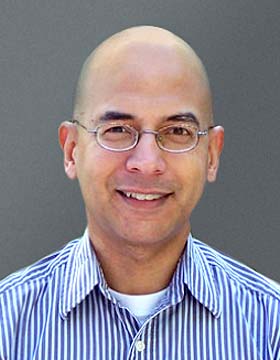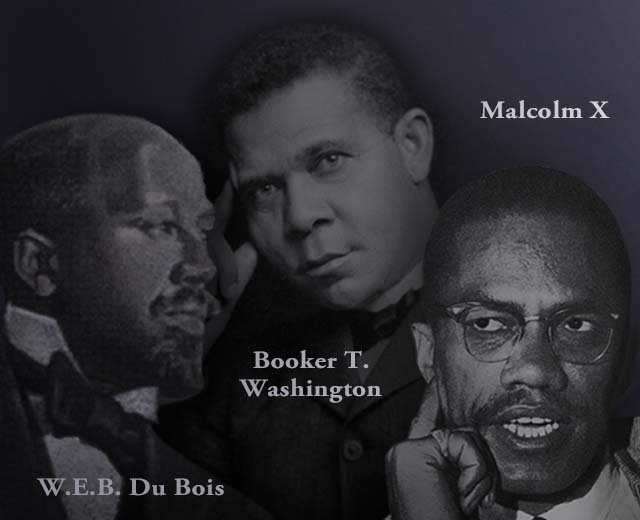On Monday, January 20, 2025, the United States of America will recognize the twin federal holidays of the Rev. Dr. Martin Luther King, Jr. and Inauguration Day for the 47th President of the United States. Many Americans will choose to honor King with a day of service or watch videos of his most famous speeches. Indeed, the image of King as an activist leading a civil rights march or speaking in front of thousands is often frozen in time in a photograph or on a postage stamp, as if it had always been that way.
Long before he assumed his role as America’s most prominent activist and speaker, King was a student and a writer, developing his awareness of social and political issues which would shape the person he became. As the director of History and African American Studies at University of Maryland Global Campus (UMGC), I always remind my students that they need to know the background of leaders like King to fully understand the history of the Civil Rights Movement and what it means for the future of the nation.
Martin Luther King, Jr. was admitted to Morehouse College, a Historically Black College, in 1944 following his junior year in high school. Within a few years, he had become a leader on campus, winning a prize in an oratorical contest and becoming the president of the sociology club. He also served on the debate team, student council, the college chapter of the National Association for the Advancement of Colored People (NAACP), and other student organizations.
MLK and the Power of His Writing
In August 1946, 17-year-old King wrote a letter to the editor of the Atlanta Constitution newspaper, now part of the Atlanta Journal-Constitution. Although it is not clearly stated, the letter may have been written in response to the recent killings in Georgia of two African American couples and an African American World War II veteran who had attempted to vote. The newspaper expressed regret for the murders but also opposed making lynching a federal crime. No one was ever charged in these cases.
In his letter, King addressed the issues of education, employment, voting rights, and other areas. He demanded equal treatment for African Americans and scolded white Americans who argued that racial equality would lead to “social mingling and intermarriage.” He pointed out that raising such questions was in fact a deliberate attempt to evade the real issues that mattered, namely social, political, and economic justice for African Americans.1
Several months later, in January 1947, King wrote an opinion editorial in the Morehouse campus newspaper, the Maroon Tiger. Although he was barely 18, he had already begun to develop his philosophy of education. In his article “The Purpose of Education,” King argued that many Morehouse students he encountered were in college for the wrong reasons, to develop what he called “the proper instruments of exploitation so that they can forever trample over the masses.” By this, he meant that these students sought education in the pursuit of status, wealth, and ultimately power over others.
King instead argued that education should have two purposes. First, education should teach individuals to think critically, logically, and more efficiently to prepare for life. And secondly, education must also teach those individuals to think for themselves and to learn how to weigh evidence to discern truth from falsehoods. He questioned whether many “so-called educated people” were doing this and accused those in “the press, the classroom, the platform, and the pulpit” of neglecting this essential purpose intentionally and unintentionally. He called for education that combined intelligence and character and warned that colleges were in danger of producing “close-minded, unscientific, illogical propagandists, consumed with immoral acts.”2
The themes expressed in King’s early writings—highlighting the real reasons for delaying and denying Black economic, political, and social justice, the true purposes of education, and a focus on character—would shape his thinking throughout his life. While still at Morehouse, he participated in monthly meetings of the Intercollegiate Council, an interracial student group in Atlanta where he interacted with students from Emory University. King also met and learned from Dr. Benjamin Mays, the President of Morehouse College from 1940 to 1967. Mays believed that Black colleges had a responsibility to teach “democratic living,” and he encouraged students to learn about the independence movement in India against British rule. It was likely Mays who first introduced King to Gandhi’s philosophy of non-violent resistance as not only a tactic against oppression, but also as a way of living. King later credited these experiences with shaping his approaches to the 1955 Montgomery Bus Boycott, the creation of the Southern Christian Leadership Conference (SCLC) in 1957, and the civil disobedience campaigns in Albany, Georgia and Birmingham, Alabama during the early 1960s.
MLK’s Call for Non-Violent Resistance
As the progress of the Civil Rights Movement slowly ground on, King became increasingly convinced that non-violent direct action or resistance had the power to transform both the oppressed and the oppressor, and therefore the nation. He perhaps expressed these thoughts most clearly in his 1963 book, Why We Can’t Wait. In the book, he summarized efforts since the Civil War to advance political, economic, and social justice for African Americans from the NAACP and Marcus Garvey to the student-led sit-ins and the Nation of Islam.
However, King argued that non-violent resistance was uniquely positioned to transform the country as a whole and heal the nation from its historical traumas perpetuated by racism. Calling it “the sword that heals,” he argued non-violent resistance had the potential to empower African Americans to achieve real and lasting victories. He also believed that non-violent resistance exposed the moral emptiness of white America while confusing and paralyzing the power structures designed to enforce racial segregation. By doing so, African Americans were breaking with the historical traditions of American masculinity and violence as acceptable methods to settle disputes and organize societies. Non-violent resistance, he believed, showed Americans and the world a new way of organizing society based on principles of love and morality.3
By 1967, the Civil Rights Movement had entered a new phase. The landmark victories of the 1964 Civil Rights Act and 1965 Voting Rights Act along with school desegregation ran into the realities of achieving economic, political, and social justice for African Americans. Although falling, the unemployment rate for African Americans was still at least twice the rate of white unemployment, large wealth gaps persisted and even grew, and only 9 percent of African American children attended integrated schools.
In his final book, Where Do We Go From Here: Chaos or Community? King addressed these concerns while defending what non-violent resistance had achieved. He supported the calls by Black Power advocates to achieve political and economic power for African Americans and backed the Black Power Movement’s focus on cultural and psychological well-being as positive trends. However, King maintained that the fate of African Americans was tied to the future of the United States. Unlike nations in Africa or Asia who could decolonize themselves from European powers, African Americans could not decolonize themselves from white Americans. The solution, he argued, was to create racial understanding, not find racial understanding, and build a new society based on principles of love and community, not violence and economic exploitation.4
Understanding Martin Luther King, Jr. and his ideas is essential toward comprehending his historical significance as one of the most important figures in American and world history. It is not enough to honor his birthday with a video or a day of service, as important as they may be. Nearly 100 years after his birth, helping to continue moving King’s vision forward is more crucial than ever as the nation approaches the 250th anniversary of the Declaration of Independence in 2026.
1 "Kick Up Dust," Letter to the Editor, Atlanta Constitution, August 6, 1946.
2 Martin Luther King, Jr., “The Purpose of Education,” Maroon Tiger (January-February 1947): 10.
3 Martin Luther King, Jr., Why We Can’t Wait (New York: Penguin Books, 1964).
4 Martin Luther King, Jr. Where Do We Go From Here: Chaos or Community? (New York: Harper and Row, 1967).
Reference on this webpage to any third-party entity or product does not constitute or imply endorsement by UMGC nor does it constitute or imply endorsement of UMGC by the third party.



/blog-black-history-month-linklist-banner-GettyImages-482964331.jpg)

